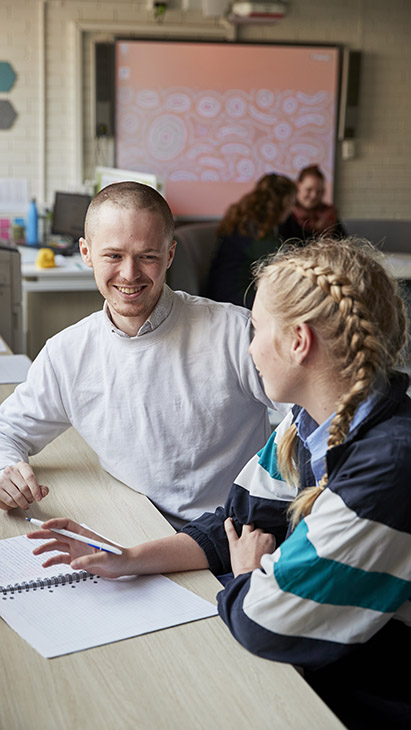Graduated guidance
Graduated prompting is a scaffolded approach to increasing student independence in learning tasks. It may be particularly helpful for some students on the autism spectrum, or some students who have physical disability or an intellectual disability.
When a student is learning something new, most-to-least prompting may be most helpful. In most-to-least prompting, teachers or School Learning Support Officers provide lots of prompts and support (for example, physical prompts), and these are faded as the student becomes more proficient or confident with the task.
Least-to-most prompts tends to be used when a student is relatively proficient in a task, but is responding incorrectly or not engaging in a task. This approach involves providing the least amount of support needed to support the student with engaging in the task correctly.
The use of full or partial physical prompts should be included as part of a student’s Personalised Learning and Support Plan and in line with the six decision-making principles for the use of restrictive practices.
This visual provides a brief overview of graduated prompting, and can be printed for display in a staff room or office.

School Excellence Framework alignment
Wellbeing, Effective classroom practice
Australian Professional Standards for Teachers alignment
Standard 1: Know students and how they learn
Audience
Secondary teachers
Purpose
This resource provides an overview of evidence-based practice of graduated guidance. This technique of prompting is a scaffolded approach to increasing student independence in learning tasks.
Reviewed
November 2021. Share your feedback here